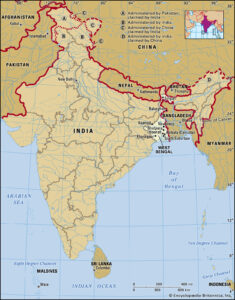Lancet Study states that more than 7 lakhs death per year in India
According to a study published in The Lancet Planetary Health Journal, roughly 7,40,000 deaths in India can be attributed to hot and cold temperatures due to climate change. 
According to the Lancet researchers, the number of deaths in India per year due to abnormally cold temperatures is 655,400 while the number of deaths due to abnormally high temperatures is 83,700.
The Lancet study, which was published on Wednesday, indicated that this mortality figure will get worse in the future because of global warming due to climate change. The hot temperatures have increased in all regions from 2009 to 2019 where global temperatures rose by 0.9 degrees Celsius per decade.
The cold-related deaths fell from 0.51% from 2009 to 2019 while heat-related deaths rose from 0.21% in the same period, indicating a reduction in the net mortality due to cold and hot temperatures.
Globally, more than five million extra deaths per year can be attributed to non-optional temperatures, more than half of which occurred in Asia and particularly in East and South Asia, according to an international team led by researchers at Monash University, Australia.
The study is the first to link non-optimal temperatures to annual increases in mortality. The study found that 9.43% of global deaths could be attributed to hot and cold temperatures. This means that there are 74 excess deaths for every 100,000 people, with most deaths attributed to cold exposure.
According to Professor Yuming Guo, from Monash University, global warming may, “slightly reduce the number of temperature-related deaths, largely because of the lessening in cold-related mortality.”
“However in the long-term climate change is expected to increase the mortality burden because heat-related mortality would be continuing to increase,” he added.
The data shows Eastern Europe and Sub-Saharan Africa having the highest heat and cold-related excess deaths since the data shows geographic differences in the impact of non-optimal temperatures.
According to researchers, Europe had the highest excess death rates per 100,00 due to heat exposure while Sub-Saharan Africa had the highest death rates per 100,000 due to cold exposure.
The greatest decrease in net mortality took place in Southeast Asia while there was a temporal increase in South Asia and Europe. “This is the first study to get a global overview of mortality due to non-optimal temperature conditions between 2000 and 2019, the hottest period since the Pre-Industrial era,” Guo said.
The data for the research was taken from 43 countries across five continents having different climates, socioeconomic and demographic conditions with differing levels of infrastructure, and public health services. The second-largest study was published in 2015 across 13 countries or regions where roughly 7.7% of the deaths were attributed to cold and hot temperatures.
Guo said, “The study had a large and varied sample size, unlike previous studies.” He further added, “The importance of taking data from all points of the globe was to get a more accurate understanding of the real impact of non-optimal temperatures under climate change.”




